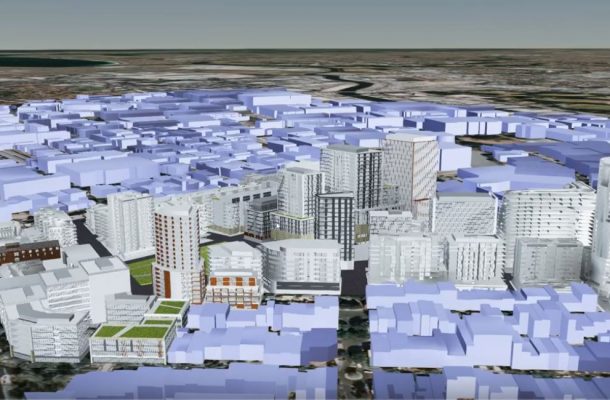Helping plan for hotter cities

As Australian cities heat up, the need for local governments and planning practices to address rising temperatures and the resulting urban heat island effect (UHI), is being assisted by an innovative, online UHI mitigation decision-support tool, funded by the CRC for Low Carbon Living.
The Microclimate and Urban Heat Island Mitigation Decision-Support Tool brings together scientific models, case studies and broad guidelines to help government and built environment industry reference top heat mitigation strategies and effects, relative to their city.
The 3D platform enables users to visualise development alternatives and ‘see’ the effects of various heat mitigation techniques including the addition of trees and water features or cool roofs and pavements.
Project Leader, Associate Professor Lan Ding of the University of New South Wales (UNSW), said the tool will not only provide scenario analysis to better address the heat, it will inform future urban policy, development assessment and planning practices in related to mitigate urban overheating, improve outdoor thermal comfort and protect the health of the vulnerable.
“This tool is unique because it integrates scientific models with a range of mitigation techniques to provide urban heat island mitigation analysis across both urban and building scales, such as urban form, parks, greenery, waterways and cool roofs,” she said.
“This tool can be used by people without any technical background. You simply click to explore development alternatives and view the potential of mitigation options to reduce the impact of urban overheating,” said A/Professor Ding.
Ultimately this decision-support tool will bridge the gap between research on urban microclimates and the practical application of strategies to reduce temperatures on city streets and public spaces during the hottest days.
The tool has been used to demonstrate UHI mitigation scenario analysis of development projects in the Sydney region: Green Square Town Centre redevelopment by Landcom and City of Sydney, Parramatta Civic Link redevelopment by Parramatta City Council, and Macarthur Heights greenfield development by Landcom and Campbelltown City Council.
According to CRCLCL CEO, Professor Deo Prasad the project has involved multiple stakeholders from state and local governments, built environment industry and academia.
“This tool and others like it that CRCLCL research has created over the past seven years, is helping change the face of the way we plan and build our cities to mitigate climate change,” he said.
“This is just the start to the way we build cities of the future to ensure they are sustainable, resilient, healthy and liveable.”
The CRC for Low Carbon Living is Australia’s only research and innovation hub committed to lowering carbon emissions in the built environment sector. The CRCLCL is on target to meet its founding goal of lowering Australia’s residential and commercial carbon emissions by 10 mega tonnes by 2020, through the development of advanced construction materials and the development of social, technological and policy tools. The CRCLCL research program will officially close at the end of June 2019.
Open Forum is a policy discussion website produced by Global Access Partners – Australia’s Institute for Active Policy. We welcome contributions and invite you to submit a blog to the editor and follow us on Twitter, Facebook, Linkedin and Mastadon.












